Why you should trust me
From March 2011 to July 2014, I was the accessories editor at iLounge. During my tenure, I reviewed more than 1,000 products, including dozens upon dozens of Lightning cables—cables from Apple and third parties alike, officially licensed cords, and knockoffs. Some were great and others literally fell apart in my hands. Since then I’ve tested more than 100 more Lightning cables, giving me a solid insight into what to look for.
How we picked
Do a quick search on Amazon for Lightning cables, and you’ll get tens of thousands of listings—it can be pretty overwhelming if you just want to find a good, reliable cable at a fair price.
In previous editions of this guide, we spent a huge amount of time and resources testing cables: We looked at nearly 40 popular and highly rated cables for the prior edition, including sending a selection of those to a former NASA engineer to tear them down and study their physical construction.
Our long-term testing showed that this kind of super-thorough testing was less important than the durability of each cable. Sure, some cables include a certain kind of shielding around their wires, or filler fiber (both good things, in theory), but none of our top picks ended up performing noticeably better or worse—in terms of data or charging functionality—than the others over the months and years since we first tested them. What did matter was how well a given cable held up to regular use: Did the cable still work after six months or a year? Did the cable start to come apart from the plug?
Based on this real-world experience, we decided that our testing should instead focus primarily on two things: durability and charging speed. Wirecutter readers want cables that will hold up over time without fraying, splitting, or otherwise falling apart, and they want cables that will allow them to charge their devices at the fastest possible speed.1 We also considered only MFi-licensed cables to ensure compatibility with all iOS devices and all versions of iOS.
That said, plenty of cables fulfill those criteria, and the differences in price and functionality between good cables is small. Though we could spends dozens of additional hours researching and testing more cables to find minute differences, we’d never be able to test them all, and even if we were to do so, the good ones would test similarly. In addition, because cables are such a commodity product, we had to change our previous top picks several times because companies such as Monoprice and Amazon routinely discontinue cables and replace them with different models, or they change (sometimes silently) the construction or components.
What we can do is find cables that satisfy our criteria, that come from a reputable company we’ve had good experiences with as both customers and reviewers, and that we’ve been using ourselves long enough to feel confident in their durability. So instead of saying, “This is the best cable,” we’re telling you the cables we’d buy ourselves.
Our pick: Anker PowerLine Lightning Cable

Our pick
Anker PowerLine Lightning
The Lightning cable we’d buy
Anker’s PowerLine cables are fast, sturdy, and inexpensive, plus they come with a great warranty.
*At the time of publishing, the price was $8.
The MFi-licensed Anker PowerLine Lightning cable offers everything we look for in a cable at a great price. It can charge every Lightning-equipped device except the iPad Pro at full speed, and it is built to be sturdy. Plus, Anker stands behind its products more than most companies do.
Most Lightning cables look alike, but when you look closely at the PowerLine, its benefits show. The most evident is the sturdy housing around the USB and Lightning connectors. Each has a hard plastic casing holding the plug, with a slightly more flexible material joining the housing and the cable itself. According to Anker, the cable is designed to have a 5,000-plus-bend lifespan. Though we haven’t independently verified this number, this is some of the best construction we’ve seen in reasonably priced cables. (Overengineered models exist, of course, but we consider them overkill—and they usually cost more than most people want to spend on a cable.) Anker also claims that the PowerLine cable is “reinforced with bulletproof Kevlar fiber.” Again, we take the company at its word on this one; what we can say is that the PowerLine cables look and feel sturdier, especially at those connection points, than some of our previous picks from Monoprice, AmazonBasics, and Aduro. We of course plan to monitor long-term durability.

Anker’s cables have always been some of the best when it comes to case compatibility. Often, the plug housing on Lightning cables can be too large to fit into some cases. We tested the cable on cases with notoriously tight Lightning port openings and found no issues. It even fit the Lightning-connector opening on LifeProof cases, although Anker warns that it won’t. And as for charging and syncing, we tested the MFi-licensed PowerLine cable with nearly a dozen iPhones and iPads running various versions of iOS 9 and iOS 8; it worked as advertised with all of them.

We verified the PowerLine’s charging speed by plugging it into a USB power monitor attached to Apple’s 12W USB Power Adapter. Then we connected an iPad Air 2, which can draw 2.4 amps. The power monitor consistently showed draw of about 2.3 amps, which matches what we’ve found with other cables (the figure is never exactly at 2.4 amps due to electrical resistance and rounding).
Anker’s warranty and customer service complement its products well. In our experience, the company has been quick to replace anything that breaks within the 18-month warranty period without any hassle.
Professional reviews of cables don’t exist at this point, but thanks to Anker’s popularity on Amazon, a large base of customer reviews backs up the company’s promises. Across 1,100 reviews at the time of publication, the PowerLine Lightning cable has a 4.8-star rating (out of five). That’s an impressive number of high ratings–only 12 percent of its ratings are below five stars. FakeSpot, a website that analyzes Amazon reviews for fakes, says the reviews as a whole seem trustworthy.
At the time we’re writing this, Anker has top picks in the Wirecutter guides to multiport USB wall chargers, USB 3.0 hubs, portable solar battery chargers, USB car chargers, iPhone 6 battery cases, USB battery packs, USB 3.0 docking stations,Bluetooth keyboards, and desk lamps. This list represents hundreds of hours of research and testing, plus extended use by our staff. Anker also made some of our previous top Lightning and Micro-USB cable picks. This extended history of quality products is part of what makes us confident in choosing Anker cables.
Shorter and longer cables
Also great
Shorter cables, though generally less versatile, can certainly come in handy. They’re better at a desk when you don’t want a mess of extra cable length, or for travel, when space and weight are important considerations. The PowerLine comes in a 1-foot version that fits these situations well. It actually measures about 11.5 inches from tip to tip, but is otherwise identical to the 3-foot version in design and performance.
Also great
Anker PowerLine Lightning (6ft)
A longer cable
The same great cable in a 6-foot length.
*At the time of publishing, the price was $8.
Long cables can also be useful, especially when you want to use your iPhone or iPad while it’s charging but the nearest outlet is a good distance away. Anker’s PowerLine also comes in 6-foot and 10-foot configurations, each of which costs less than half the price of Apple’s 2-meter (6.5-foot) Lightning to USB cable. Again, in our tests, the charging and data-transfer speeds of these longer PowerLines match those of the 3-foot version.
Upgrade pick: Anker PowerLine II Dura Lightning Cable
Upgrade pick
Anker PowerLine II Dura Lightning
Same insides, lifetime warranty
This more-expensive cable has the same interior components, but Anker promises lifetime replacements.
*At the time of publishing, the price was $12.
The standard PowerLine Lightning is the right cable for most people, but if you find yourself wanting the security of a lifetime warranty, we recommend Anker’s PowerLine II Lightning cable. It has a slightly different design than the original version, but the biggest difference is the PowerLine II’s lifetime warranty, compared with 18 months for the standard PowerLine. Our experience with Anker’s customer service has always been very positive, so we know this is an actual benefit. Additionally, the company claims that the PowerLine II cable can withstand 12,000 bends in its lab tests, compared with 5,000 for the less-expensive model.
Expert electrical engineer Lee Johnson took apart and examined Anker’s Lightning cable lineup for us, including the PowerLine, PowerLine II, and PowerLine+, a fabric-covered model. He found the wiring inside each to be the same, including three ground wires, two data wires, and a power wire, all under braided shielding with foil shielding wrap underneath. The only differences between the cables are the design and material on the outside, and the electronic potting material holding the plugs to the cables. Ultimately, he concluded that these differences aren’t noteworthy enough to name one version as a clear standout. For this reason, we think most people should spend as little money as you have to to get a great cable—the PowerLine—and spend more on the PowerLine II only if you want the long-term peace of mind of its lifetime warranty.
Also great: Anker PowerLine II USB-C to Lightning Connector
Also great
Anker PowerLine II USB-C to Lightning Cable
For connecting to iPhone, iPad, and other Lightning ports
Anker’s PowerLine II USB-C–to–Lightning cable is MFi-certified, it has sturdy housings to withstand frequent plugging and unplugging, and it’s encased in a thick, rubberized sheath.
*At the time of publishing, the price was $17.
Newer computers, including all of Apple’s laptops released since 2016 and a number of Windows computers and Chromebooks, come equipped with USB-C ports instead of (or in addition to) traditional USB-A ports. You can connect your existing Lightning cables to these computers by using USB-C–to–USB-A adapters or hubs, but you can get faster charging by using the Anker PowerLine II USB-C to Lightning Connector. When we first tested USB-C–to–Lightning cables, Apple didn’t license the Lightning connector for use with third-party USB-C accessories, making its own cable the only option. But Apple has started letting other companies make MFi-certified USB-C–to–Lightning cables. We’ve tested Anker’s rubber-encased cable and think it outdoes the Apple version.
Unlike Apple’s cables, the plastic housings that join the metal connectors to the Anker cable seem sturdy and robust—built to withstand bending or fraying, even with frequent use. And its MFi-certified status means that it meets Apple’s standards to ensure optimal performance with its devices—from iPhones to Magic Trackpads—in terms of charging and data-transfer capabilities. Although you can buy unlicensed third-party options, we chose not to consider them. Since they might not be fully compatible with Apple devices, you risk the cable fitting incorrectly, overheating, and damaging the cable, device, or both. Now that there are MFi-licensed third-party cables available, there's even less reason to consider a cable that isn't.
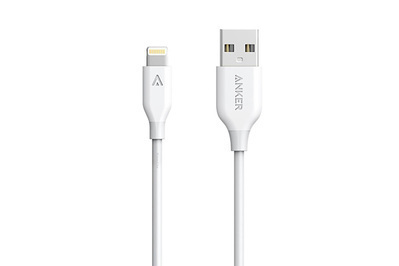
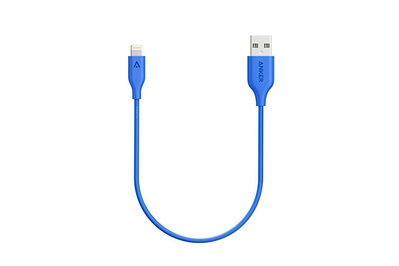
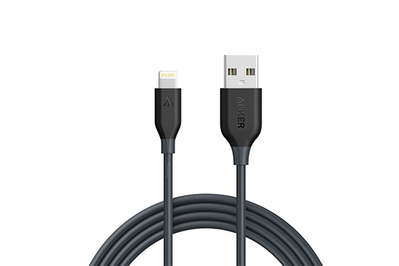
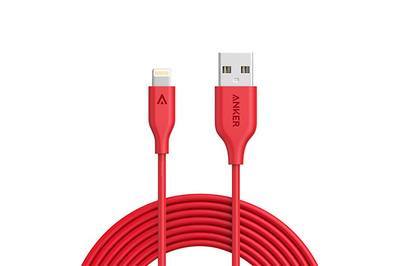
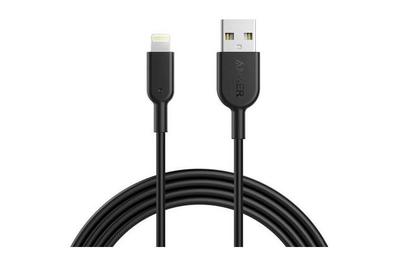
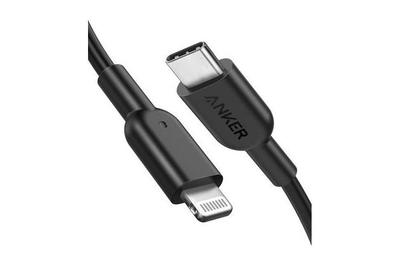
No comments:
Post a Comment
Note: Only a member of this blog may post a comment.